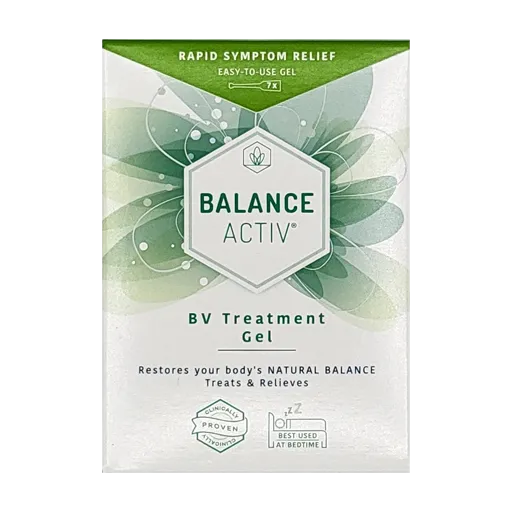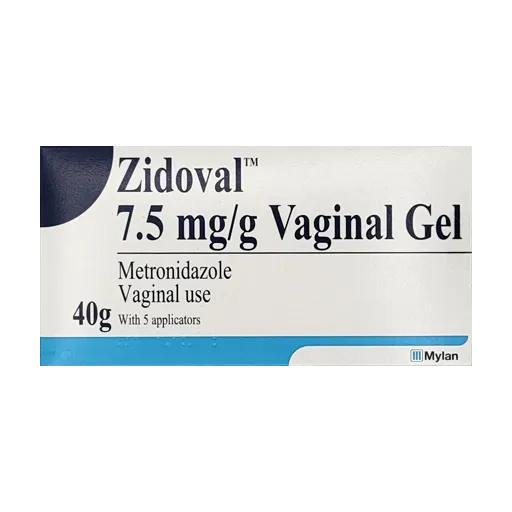bacterial vaginosis consultation
Please fill in the questionnaire below. Any information provided will be kept confidential and will only be seen by a prescriber. These questions are designed to give our prescriber enough information to make a decision on whether the treatment is suitable, please fill them in truthfully.
bacterial vaginosis
Bacterial vaginosis (BV) is the most common cause of unusual vaginal discharge in women of child-bearing age. It is not a sexually transmitted infection (STI), but it can increase the risk of getting an STI. It affects 5% of women a year. The main symptom is a thin, watery vaginal discharge with a possible fishy smell. It is caused by an imbalance of bacteria in your vagina. Douching, perfumed products and sex can cause this imbalance. You can try a treatment gel or pessaries to help restore the natural balance or antibiotics to kill the offending bacteria.
-
POM
Bacterial Vaginosis (BV)
Bacterial vaginosis (BV) is a common vaginal condition caused by an imbalance of the bacteria naturally found in the vagina.
It is not a sexually transmitted infection (STI), but it can be triggered by sexual activity and is more common in sexually active women.
BV is usually harmless and often goes away with treatment, but if left untreated it can lead to complications, especially during pregnancy or if you’re undergoing certain medical procedures.
What causes BV?
The vagina naturally contains a mix of bacteria, including “good” bacteria (lactobacilli) that help maintain a healthy acidic environment.
BV happens when the level of lactobacilli drops and other bacteria grow in higher numbers, upsetting the natural balance.
Common triggers include:
- Sex with a new or multiple partners: Can disrupt the natural balance of vaginal bacteria
- Using scented soaps, bubble baths, or vaginal washes: These can irritate the vagina and affect bacterial balance
- Smoking: Linked to a higher risk of BV
- Using intrauterine devices (IUDs): May slightly increase the risk
- Frequent vaginal douching: This removes the healthy bacteria and can lead to BV
What are the symptoms of BV?
Some women with BV don't notice any symptoms, but common signs include:
- Thin, watery vaginal discharge: Often white or grey in colour
- Strong, fishy-smelling odour: Especially after sex
- Mild irritation or discomfort: Less common, but may be present
BV does not usually cause itching, soreness, or burning - if you have those symptoms, it may be another condition such as thrush or an STI.
BV vs Thrush - What's the difference?
BV and thrush are both common vaginal conditions, but they are caused by different organisms and require different treatments. Here's how to tell them apart:
Cause
- Bacterial Vaginosis (BV): Overgrowth of harmful bacteria in the vagina
- Thrush: Overgrowth of a yeast called Candida
Discharge
- BV: Thin, watery, grey or white discharge with a strong fishy smell
- Thrush: Thick, white discharge with a “cottage cheese” appearance and no strong smell
Itching or Soreness
- BV: Usually mild or absent
- Thrush: Common - often causes intense itching, burning, or vaginal soreness
Smell
- BV: Noticeable fishy odour, especially after sex
- Thrush: No strong smell
Treatment
- BV: Treated with antibiotics such as metronidazole or clindamycin
- Thrush: Treated with antifungal medicines like fluconazole or clotrimazole
Triggers
- BV: New or multiple sexual partners, douching, scented products
- Thrush: Antibiotics, tight clothing, high sugar diets, or hormonal changes
If you're unsure whether you have BV or thrush, speak to a pharmacist or GP. Getting the correct diagnosis is important to ensure the right treatment is used.
How is BV diagnosed?
BV is usually diagnosed based on symptoms and a simple examination. Your doctor or nurse may:
- Ask about your symptoms and medical history
- Take a sample of vaginal discharge for testing
- Use a swab to check the pH level of your vagina
Tests are quick and painless, and help rule out other infections.
BV treatments
Bacterial vaginosis is treated with antibiotics that help restore the normal bacterial balance in the vagina.
These can be taken by mouth or applied directly to the vagina as a gel or cream.
Common treatments include:
- Metronidazole tablets: Usually taken twice a day for 5 to 7 days
- Metronidazole vaginal gel (e.g. Zidoval): Applied once a day for 5 days
- Clindamycin cream (e.g. Dalacin): Applied to the vagina, usually once daily for 7 days
It's important to finish the full course of treatment, even if your symptoms go away earlier. Avoid alcohol while taking metronidazole, as it can cause unpleasant side effects.
Will the treatment work?
Most cases of BV clear up quickly with treatment. Symptoms often improve within 2 to 3 days, and the infection usually clears completely within a week.
However, BV can sometimes come back - nearly 1 in 2 women may experience recurrence within 12 months. If this happens, your doctor may recommend a longer course or a different treatment approach.
Using a pH-balancing vaginal gel or probiotics may help prevent recurrence in some women.
BV treatment side effects
Side effects are usually mild and temporary. They can include:
- Metronidazole: Metallic taste in the mouth, nausea, upset stomach, or dizziness
- Clindamycin: Vaginal irritation or discharge
- Topical treatments: May cause mild burning or itching at the site of application
Let your doctor or pharmacist know if side effects become bothersome or if symptoms do not improve after treatment.

